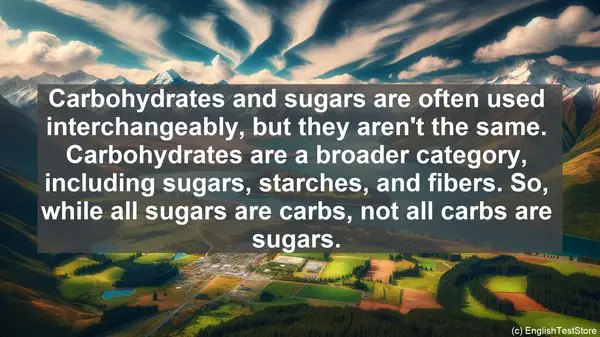Introduction
Welcome to our lesson on the top 10 commonly confused words in nutritional physiology. As students, it’s essential to have a strong grasp of these terms to excel in this field. So, let’s dive right in!
1. Calorie vs. Calory
One of the most common confusions is between ‘calorie’ and ‘calory.’ While ‘calorie’ refers to the unit of energy, ‘calory’ is an outdated term. So, when discussing food energy, always use ‘calorie.’
2. Carbohydrates vs. Sugars
Carbohydrates and sugars are often used interchangeably, but they aren’t the same. Carbohydrates are a broader category, including sugars, starches, and fibers. So, while all sugars are carbs, not all carbs are sugars.
3. Saturated vs. Trans Fats
When it comes to fats, ‘saturated’ and ‘trans’ are two types that often cause confusion. Saturated fats are usually solid at room temperature and are commonly found in animal products. Trans fats, on the other hand, are artificially created through hydrogenation. Both types have different effects on health.
4. Essential vs. Non-Essential Amino Acids
Amino acids are the building blocks of proteins. While our body can produce some amino acids, there are others that we need to obtain from our diet. The ones we must get from food are called ‘essential’ amino acids, while the ones our body can make are ‘non-essential.’

5. Macro vs. Micronutrients
Nutrients can be broadly classified into two categories: ‘macro’ and ‘micronutrients.’ Macros, such as carbohydrates, proteins, and fats, are needed in larger quantities, while micronutrients, like vitamins and minerals, are required in smaller amounts.
6. Digestion vs. Absorption
Digestion and absorption are two distinct processes in our body. Digestion involves breaking down food into smaller components, while absorption is the uptake of these nutrients into the bloodstream. So, digestion is the first step, and absorption is the second.
7. Glycemic Index vs. Glycemic Load
Both the glycemic index (GI) and glycemic load (GL) are measures of how a food affects blood sugar levels. However, the GI only considers the quality of carbohydrates, while the GL takes into account both the quality and quantity. So, the GL provides a more comprehensive picture.
8. Anabolism vs. Catabolism
Anabolism and catabolism are two opposing metabolic processes. Anabolism refers to the building up of molecules, while catabolism is the breakdown. Together, they maintain the balance in our body’s metabolism.

9. Basal Metabolic Rate vs. Resting Metabolic Rate
Both the basal metabolic rate (BMR) and resting metabolic rate (RMR) indicate the energy our body needs at rest. However, the BMR is measured under strict conditions, while the RMR is a more practical estimate. In most cases, the terms are used interchangeably.
10. Nutrient Density vs. Energy Density
Nutrient density and energy density are concepts often discussed in relation to food. Nutrient density refers to the amount of nutrients per calorie, while energy density is the number of calories per gram of food. So, a food can be high in energy density but low in nutrient density.
